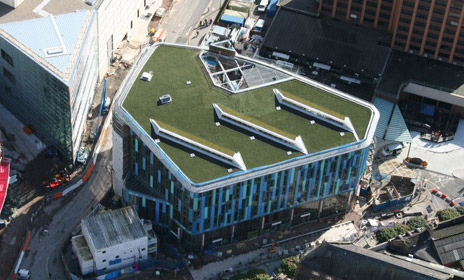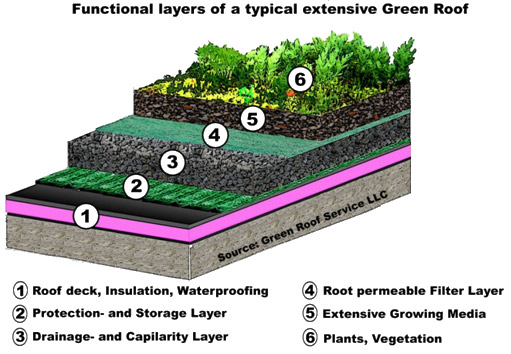 A green roof is partially or completely covered with vegetation and a growing medium, planted over a waterproofing membrane. It may also include additional layers such as a root barrier and drainage and irrigation systems.
A green roof is partially or completely covered with vegetation and a growing medium, planted over a waterproofing membrane. It may also include additional layers such as a root barrier and drainage and irrigation systems.
They serve several purposes for a building:
- They absorb and store rainfall,
- Filter pollutants from rainfall
- provide insulation,
- create habitats for wildlife,
- help lower urban air temperatures and combat urban temperature
There are two main types of green roofs: intensive roofs which are thicker and support a wider variety of plants but are heavier and require more maintenance, and extensive roofs which are covered in a light layer of vegetation and are lighter.
Modern green roofs, which are made of a system of manufactured layers deliberately placed over roofs to support growing medium and vegetation, are a relatively new phenomenon. However, green roofs or sod roofs in Northern Scandinavia have been around for centuries. The modern “trend” started when green roofs were developed in Germany in the 1960s, and have since spread to many countries. Today, it is estimated that about 10% of all German roofs have been “greened”.
Layers of a typical Green Roof

- Bottom layer: Roof deck, insulation and waterproofing
- Protection and storage layer
- Drainage and capilarity layer
- Root permeable filter layer
- Extensive growing media
- Top layer: Plants, vegetation
View sites in Wales with a Green roof system.









